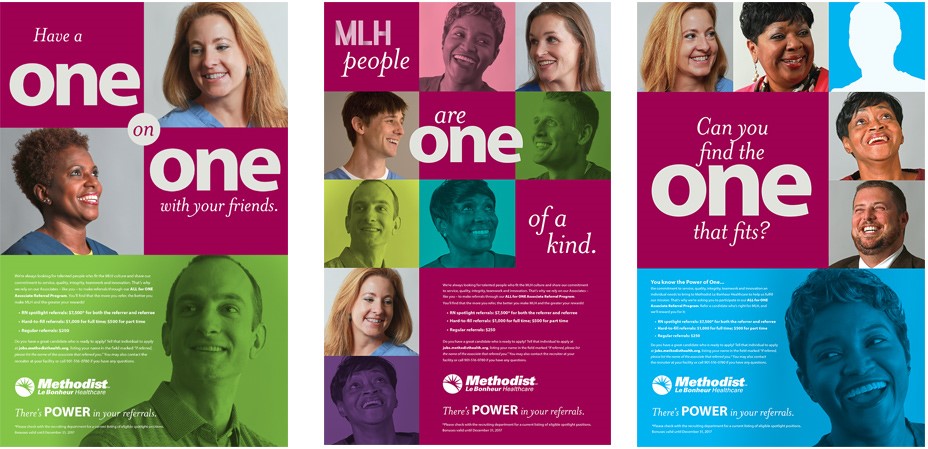-
Recruitment marketing perennials that still get results
Posted by Lisa B. Radloff on August 30th, 2018 
From programmatic, PPC and social media to the latest developments in artificial intelligence (AI), the job search has come a long way. Yet there are many aspects of recruitment which haven’t changed over the years, and for good reason: because they still work. Here, we take a look at 5 tried-and-true perennial strategies that our clients continue to successfully use in their recruitment efforts.
Print
Print media, such as newspaper, can still be effective for companies with a small number of job openings, as well as those looking to launch a massive hiring initiative (for example, a new Call Center needing to hire hundreds of people). Some audiences still prefer print, and candidates for certain job types (entry-level manufacturing, service industries) may be more easily reached through local newspapers. And for some industries, trade publications are still a good way to promote an employer brand. Additional advantages include:- Laundry-listing. Whereas online job search is generally restricted to defined search parameters, print facilitates the opportunity to advertise positions across disciplines. For example, if your company has openings across several job disciplines, you can run one print ad for openings in all areas. In the online job posting format, advertised jobs are generally tied to individual job requisitions in an ATS.
- Geographical targeting. This works well in situations where you need to recruit within a regional area. For example, if you have job openings in a five-state region in the Northeast, you can place a print ad in a few major newspapers to reach the entire area. For sparsely populated areas, the major newspapers within a state may serve as a great way to reach remote areas.
- Non-exempt positions. Local community newspapers also spread the word quickly in smaller markets, and for non-exempt positions.
- Cross-marketing. Even small community papers tend to have a digital version of their publication, and their print ads are cross-posted online. In addition, larger metro area newspapers are often contracted with job boards for their online jobs portal.
January continues to rank as the busiest month of the year for job searches, while Monday and Tuesday remain the busiest days for job-seekers.
Direct Mail
Ever wonder why you still receive glossy print communications in your mailbox? Because Direct Mail works. A clever, well-designed piece or a mailing with an unusual shape will capture the attention of a candidate and give you a few moments of her undivided attention. This media channel may also offer the ability to tap into your Talent Network database and sourcing channels in order to personalize your communications to a targeted audience.Employee Referral Program (ERP)
It has long been established that employee referral programs are one of the most successful and cost-effective methods of recruiting new staff. Referrals offer the fastest time to fill, and the average length of employment of referral hires after one year is 46% retention, compared to 33% from career sites and 22% from job boards. After all, who better than your own employees understand your unique culture and, by extension, know others who may likely be an ideal fit for your organization.
See the referral campaign we developed for Methodist Le Bonheur Healthcare (MLH)
Radio
According to a 2017 Nielsen report, radio remains the top method of reaching consumers across all media platforms; an astounding 93% of Americans tune into radio more than watch television, or use smartphones, tablets or computers. In addition, most people listen to radio in the car during the work commute. Talk about a captive audience!Radio can be used very effectively for event promotion when you may be hiring a large number of people and need to target a wide audience. In addition, you can select dayparts that match your ideal candidate’s patterns; if you need to hire for third shift, you can advertise in off-peak hours, etc. Additional tips:
Be mindful of timing. You don’t want to run radio spots too far in advance so that listeners are not able to recall the details. On the other hand you want to allow reasonable time for candidates to make plans to attend your event.
Write for the listener. Your radio spot should be clear and concise, repeated, and memorable. Your radio spot should not be overloaded with numerical detail, such as “3265 North First Street, June 19th from 11am to 1pm, and 4pm to 6pm” …no one will recall that level of detail.
Don’t be fooled by less expensive, shorter duration radio spots. While you may stretch your dollar for spot frequency, you are giving up valuable time required to capture your listener, communicate your message and repeat details. Half the spot time, :15 vs :30, generally does not equate to one-half the price.
Demographic targeting offers a unique advantage: the opportunity to target your ideal candidate based on cultural and social backgrounds. From talk radio to sports, easy listening, classic rock and Hispanic programming, radio features many formats from which to choose.
Open Houses and Job Fairs
On-site hiring events have long proven to be an effective option for recruiting large numbers of people in a short amount of time. The goal of an Open House or Job Fair is to provide a personalized, productive candidate experience. This avenue allows you to “tell your story” in person and make a real connection with candidates. In our smart phone-obsessed social culture, we could all use a little more human contact.Lisa B. Radloff




